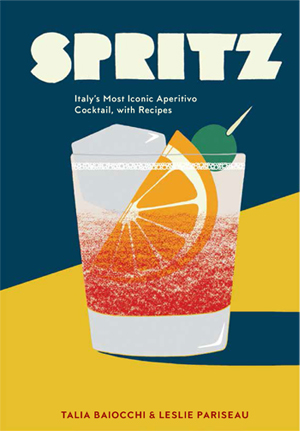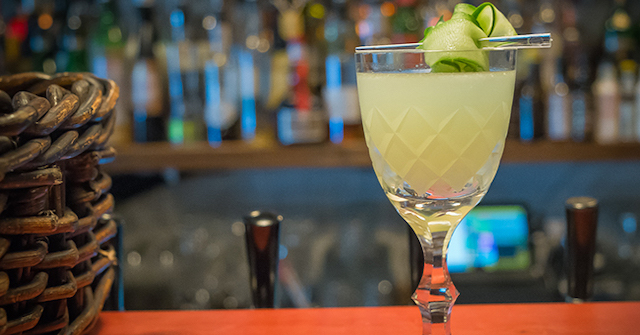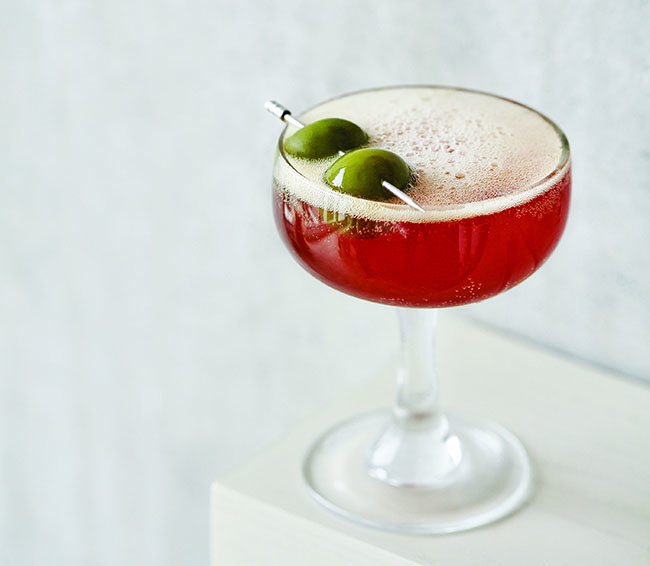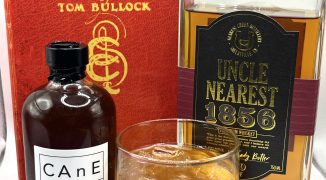There are summery drinks, and then there’s the spritz. Italian in origin, spritzes are bitter, bubbly low-alcohol concoctions, best enjoyed over a goblet full of ice in a Venetian piazza while munching on a plate of prosciutto and crostini. Luckily for the rest of us, they taste just as good outside of Italy. While you’re probably already familiar with their most famous representative — the Aperol spritz — there’s a whole world of spritzes for every taste, and they’re endlessly adaptable: swap the soda water for tonic water, Aperol for Cocchi Americano and add some housemade cranberry shrub. Thanks to their low alcohol content, they’re perfect all-day sipping and easy on your wallet.
Punch editor-in-chief Talia Baiocchi and Leslie Pariseau, an editor at Saveur, stumbled upon the spritz in their early twenties while traveling and have been obsessed ever since. Earlier this year, they came out with “Spritz: Italy’s Most Iconic Aperitivo Cocktail, with Recipes,” a love letter to everything spritz, from its history to the modern variations being debuted in bars across the US. We talked to Pariseau about the best cities for spritzes, what makes the spritz uniquely Italian and why we have Aperol to thank for everything. Plus, she shared with us two of her favorite recipes from the book.
Spritz means a few different things — for a long time in the U.S., it’s meant drinks like a white wine spritzer. What’s your definition?
The spritz is more a style of drinking than a strict recipe. We had to explore what this style meant and create some guidelines for it. The three things that we came up with that are essential to a spritz is one, above all, it must be bubbly — generally the Italians get that from prosecco or from soda water. Second, for us, a spritz is about being low alcohol, and you can drink a few of them. It’s really meant to be drunk at an hour between work and dinner when you’re getting out and you want to grab that after work cocktail in the afternoon, that golden hour. And third, we always think that they should have an element of bittersweetness. The traditional style of Italian aperitivos have this bittersweet backbone, whether from Aperol or Campari or Cynar, and now there’s a whole host of other red bitters and amari.
In the book, you mention how every Italian has a different origin story for the spritz. Which ones stand out to you?
One guy told me that women were not supposed to be seen drinking in public because it was not proper and not feminine, so women used to disguise their drink with juice. Somehow red bitters snuck its way in there and they were able to disguise that they were drinking. It was the most absurd story.
We had another story that said the spritz got its color when one guy in a bar punched another guy, blood got into the cocktail, and that’s how it got red. It really underscores how the Italians talk about drinking, how everybody has their own style and each region has its own way of making something, and all of the local lore and myths get imbued into the cocktail culture or the coffee culture or the food culture, and that lets them claim the drink in their own way.

When researching the book, you and Talia went on a road trip to seven different Italian cities to research the spritz, and every city had their own spritz culture. Which did you like best?
Venice is ground zero for spritzing. The working culture is more laid back. You walk out at 12 p.m. and everybody’s off work, and everybody’s sitting in a piazza drinking something — it might be white wine, it might be a spritz, it might be coffee. It’s very social. That city has its own mystique and beauty that is so distinct compared to other Italian cities. There’s something about sitting on a canal with all the locals drinking a spritz and having a little bite to eat.
Turino is this incredibly rich city. It’s smaller, but it’s got its own rich culture and was, at one point, a touchstone for coffee and vermouth culture. A lot of that still exists. You can walk around and you see cafes and bars that have been there for a century or more, making their own vermouth, and their own amari. You could spend your morning at a cafe and very well sit through the afternoon and end up having aperitivo there as well.
The spritz ties into a lot of our romantic views of Italian culture. What makes it such a distinctively Italian drink?
Industrialization did a lot for leisure culture and made it so you had an hour that you could get off work and you could go be social. You could have a little extra money to spend at a bar and eat something and drink something with friends. That sort of worked its way into Italian culture, this idea of leisure and the good life — la dolce vita, which is a little cliche, but it’s so true. It’s ingrained there. You have your lunch hour and you have a glass of wine. Food and drink are intertwined: you’re rarely drinking without eating and vice versa.
How did Aperol help popularize the spritz?
Before Aperol, the spritz was just a style. The story goes that the Austrians occupying Northern Italy were diluting the wine with a spray of water — spritz means a spray — so it was more palatable to them. That’s the general basis for the spritz. Like any drinking history is concerned, it gets a little hazy, but at some point the red bitter works its way into this wine and water composition, and each region has their own red bitter. Soda water comes into the equation, and somehow ice and prosecco made their way in as well. That’s when you get this modern iteration of the spritz and Aperol seized on this opportunity and saw that this was a style that could be marketed. They standardized the recipe, the 3-2-1 which you’ll still find on the back of any bottle, and were able to take this around the world and teach people about the style of the spritz. Otherwise it would have remained tucked away in this corner of Northern Italy forever.
 The Senza Spritz is an slightly briny, herbaceous ode to the sea and one of Pariseau’s favorite spritzes from her forthcoming book. Photo by Dylan + Jeni © 2016.
The Senza Spritz is an slightly briny, herbaceous ode to the sea and one of Pariseau’s favorite spritzes from her forthcoming book. Photo by Dylan + Jeni © 2016.
What are some of your favorite modern versions of the spritz in the US?
Natasha David of Nightcap in NYC and Alex Day of Death & Co. have always both had this incredible sensibility of what’s coming next in the cocktail world. I think there is this distinct movement right now, a reaction to the strong stirred dark cocktails, where low-ABV is becoming much more appreciated. They both saw this very early on and when they opened Nightcap, Natasha had this great section on the menu that was all spritzes. Likewise, Alex — in his incredibly astute cocktail geek-y way — has done a lot with putting spritzes on tap. We were just in Atlanta, and Greg Best and Paul Calvert at the Ticonderoga Club have led the charge for a category of cocktails which are the inversion of revivers, that are all low-ABV.rn
What are some of your go-to modern spritzes from the book?
One that seems so weird but we love is a drink called the Safe Passage. It’s salty, it’s bitter, it’s sweet and it’s not what you expect at all. It’s this really savory, bittersweet martini. That’s a good one.
The other one I really like is called the Sensa Spritz, an ode to this ritual that happens in Venice every year where they celebrate their marriage to the sea and renew their vows to the ocean. They have this incredible ceremony where they take all these boats out and drop a gold ring into the ocean. It’s something so Venetian, so we created this cocktail that has salty, briny flavors: cucumber, vermouth and Salers.
What’s your advice for someone making these at home or at a bar?
The beauty of the spritz is that it’s so easygoing and riffable. All the recipes are jumping off points because you can’t screw up a spritz almost ever. You just add a little more prosecco or add a little more lemon juice, and it’s delicious. Give yourself the freedom to figure out what you like.
Finally, why should more people start drinking spritzes?
If you’re a novice drinker at all, it’s one of the more approachable ways to drink because they’re totally slurpable. If you don’t like bitter, you can start out really easy and go from Cocchi Americano and work your way up to Campari. You can also have a few of them. You’re not going to be bombed in the sun after one of them. The spritz goes the distance.
And for bartenders? Why should they add a spritz to the menu?
Purely from a sales point of view, they’re probably easy on the margins and people will want to drink one or two or three of them. But also it’s one of those drinks where someone orders one and the ripple effect happens down the bar. People are like, “Oh I’ll have one of those.” It’s an easy sell. And it’s delicious.





